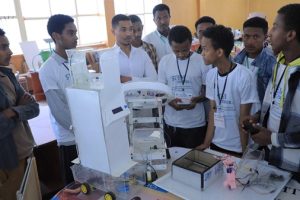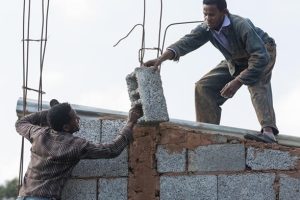Having mostly an agrarian society, more than 70 percent of Ethiopia’s GDP rests on agriculture. That is why the country has been striving to modernize the sector, scaling up the best experiences that can be contextually applied in the country.
Apart from the timely delivery of agricultural input and employment of agriculture and health extension agents, the Ministry of Agriculture (MoA) has been actively engaging the rural communities in schemes that aim to improve agricultural productivity using community-based video production, dissemination, and data management.
Using such platforms, and by evaluating changes observed within the rural community, MoA has managed to enhance the effectiveness of the extension work.
The video production, dissemination, and data management activities are acknowledged by functionaries and leadership at the local level. The videos have been creating change in behavior, demand for inputs (e.g. seeds, fertilizers…) and technical support. But, it still needs high attention and proactive action (accessibility, affordability…) and periodic follow. Efficient coordination is a must between implementing parties at various levels: for example, Developmental Agents and Health Extension Works at kebele level.
On the other hand, the production of the video is affordable if the government works closely with development partners with a sense of stewardship. For instance, once developing a storyboard with trained subject matter specialists and get approval, selecting featuring farmers, location, shooting inputs, dates and time follow.
In addition, community-based video is not that expensive as it needs only trained SMS behind camera – DG staff coaching (low-cost equipment), editing- free and simple to use software video approval based on the standardized video review form.
Ethiopia’s MoA has been working closely with development partners launching structures at the national, regional, woreda (district) and kebele (clustered village) levels. At the woreda level, subject-matter specialists receive capacity building training to produce localized videos while at the kebele level, public extension officers are trained to screen those videos among their communities.
More particularly, the Ministry of Agriculture is working with Digital Green to integrate Natural Resources Management (NRM) into the day-to-day work of Development Agents. Leveraging video-enabled extension is helping the agents to systematically promote NRM practices among smallholder farmers year-round, and to make a direct link between NRM practices and improved crop production and livelihoods, which is a new concept for many farmers in Ethiopia.
During its first-year performance, the project made great strides in raising awareness of the public and creating demand for tree seedlings and vetiver grass to control erosion. Previously, the public extension system promoted soil and water conservation activities on communal plots, disconnected from individual farmers’ plots and from the agricultural season (planting, growing or harvest activities).
As a result of the concerted effort of the ministry and development partners, however, the practices appropriate to the planting, growing or harvest calendar have formed the basis for the promotion of practices farmers can implement in their own fields.
Coordination across the Ethiopian public extension system has been crucial for success. The MoA recently approved a new conservation strategy linked to the production of key commodities, which will fit together with the year-round video curricula the project is developing.
Empowering farmers to lift themselves out of poverty by harnessing the collective power of technology at grassroot-level in partnerships with various stakeholders is crucial to address the public quest mainly aroused from population growth and limitation of resources.
Thus, the need to focus on improving the lives of smallholder farming communities across Ethiopia shall not be left to the Ministry alone, rather it needs an all-round participation of farmers, extension workers, researchers, and input suppliers, prioritizes local level gaps; comparing against scientific recommendations; confirming availability of inputs for adoption and ‘adoptability’ of promoted practice.
The community video program, which is being implemented in four states namely Tigray, Amhara, Oromia and SNNP, and brought a greater impact on the livelihood of the community.
The Ethiopian Herald October 3, 2019
BY LAKACHEW ATINAFU







